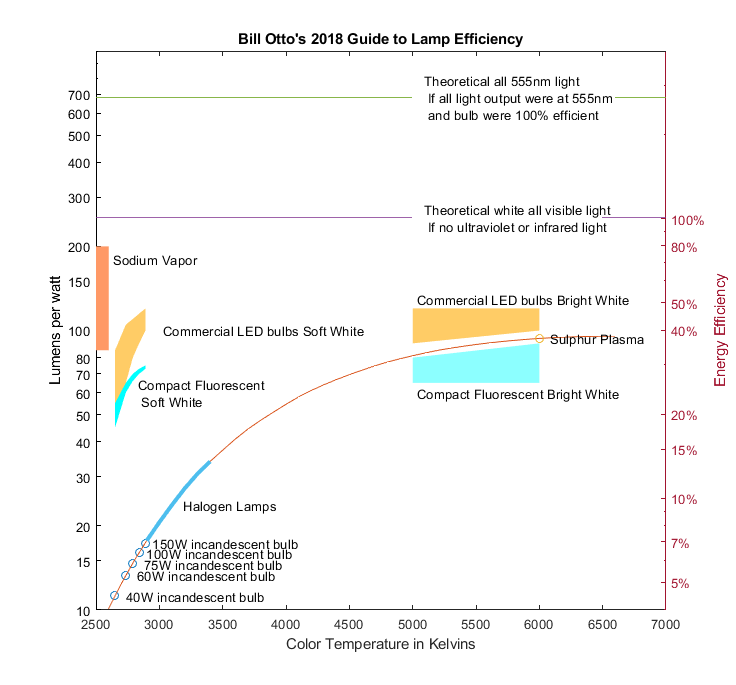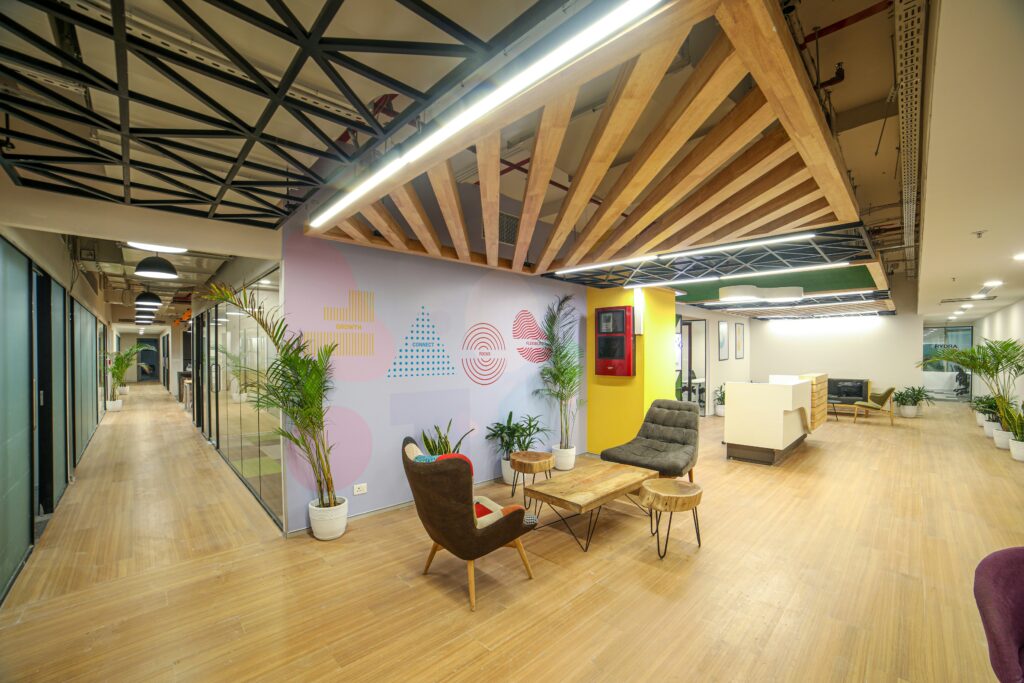LED lampen zijn een uitstekende keuze voor elke werkplek. Ze zijn efficiënt, gaan lang mee en bieden verlichting van hoge kwaliteit. Ze kunnen ook op verschillende manieren worden gebruikt om het uiterlijk van uw werkruimte te verbeteren. U kunt de productiviteit en werknemerstevredenheid verhogen door LED-lampen in uw kantoor. Ze zijn efficiënter, duurzamer en veelzijdiger dan andere verlichtingsopties.

HLLED, opgericht in 2007, is een nationale fabrikant van hightech LED profielen die CE-gecertificeerd en ROHS-conform zijn. HLLED heeft LED kantoorverlichting oplossingen aan klanten in meer dan 100 landen en duizenden grootschalige projecten wereldwijd. Laten we eens kijken waarom LED-verlichting een uitstekende keuze is voor kantoorruimtes en hoe u de perfecte opstelling voor uw behoeften kunt kiezen.
Waarom LED-verlichting voor uw kantoor kiezen?
LED (light emitting diode) technologie heeft een revolutie teweeggebracht in de manier waarop we ruimtes verlichten. Voor kantooromgevingen bieden LED verlichtingsoplossingen een aantal overtuigende voordelen:

LED lampen verbruiken veel minder stroom dan traditionele verlichtingsopties, waardoor u aanzienlijk kunt besparen op uw energierekening. Traditionele lampen hebben slechts een lichtrendement van ongeveer 20-60, terwijl LED's een lichtrendement van meer dan 100 kunnen bereiken.
Levensduur:LED lampen gaan langer mee dan traditionele lampen en kunnen tienduizenden uren gebruikt worden, zodat u ze minder vaak hoeft te vervangen. De meeste producten van HLLED hebben een garantie van 3 jaar.
Lichtkwaliteit:LED lampen bieden een breed scala aan kleurtemperaturen en produceren licht van hoge kwaliteit. Dit helpt vermoeidheid van de ogen te verminderen en creëert een comfortabelere werkomgeving. Bovendien zijn er ontspiegelde ontwerpen verkrijgbaar.
Milieuvriendelijk:LED lampen zijn een milieuvriendelijkere keuze omdat ze geen schadelijke stoffen bevatten en de koolstofuitstoot helpen verminderen.
Dit is het resultaat van een experiment:
Witte LED lampen stralen het grootste deel van hun licht uit in het zichtbare spectrum, waardoor ze zeer efficiënt zijn, met een lichtrendement tot 150lm/(2010). Ter vergelijking: gloeilampen hebben een lichtrendement van 12lm/W en gaan minder dan 2.000 uur mee, terwijl spiraalvormige spaarlampen een lichtrendement van 60lmW en een levensduur van minder dan 8.000 uur hebben. T5-fluorescentielampen hebben een lichtrendement van 96lmM en een levensduur van ongeveer 10.000 uur. Het lichtrendement van een 5 mm witte LED kan theoretisch meer dan 1501m/W zijn, en de levensduur kan meer dan 100.000 uur zijn.
Hoe verbeteren LED kantoorlampen de productiviteit en energie-efficiëntie in commerciële ruimtes?
LED kantoorverlichting biedt aanzienlijke verbeteringen in zowel productiviteit als energie-efficiëntie in commerciële ruimtes. Hier wordt nader bekeken hoe ze dit dubbele voordeel bereiken:
Productiviteit verhogen
- Verbeterde focus en comfort: LED-verlichting minimaliseert schittering, waardoor de ogen minder vermoeid raken en werknemers zich beter kunnen concentreren. Dit is met name gunstig in omgevingen waar vaak langdurig beeldschermwerk wordt gedaan.
- Ondersteuning voor het circadiane ritme: Veel LED systemen zijn kleurafstembaar, wat betekent dat ze hun kleurtemperatuur gedurende de dag kunnen aanpassen. Deze dynamische verlichting bootst natuurlijke daglichtpatronen na, ondersteunt een gezond circadiaans ritme en verbetert het algehele welzijn.
Als gevolg daarvan zullen werknemers zich waarschijnlijk alerter en energieker voelen gedurende de werkdag.
Energie-efficiëntie verhogen
- Lager energieverbruik: LED armaturen verbruiken aanzienlijk minder energie dan traditionele verlichtingsoplossingen. Ze kunnen het energieverbruik met wel 90% terugdringen, vooral in combinatie met slimme regelingen. Dit vertaalt zich in aanzienlijke kostenbesparingen op energierekeningen.
- Temperatuurbeheer: LED's geven heel weinig warmte af in vergelijking met gloeilampen of TL-lampen. Dit vermindert niet alleen de koelbelasting van het HVAC-systeem
- Slimme bediening: Geavanceerde verlichtingssystemen bevatten slimme besturingen zoals daglichtregeling en bezettingssensoren. Daglichttoetreding past kunstlicht aan op basis van de beschikbare hoeveelheid natuurlijk licht, terwijl bezettingssensoren ervoor zorgen dat er alleen verlichting wordt gebruikt wanneer er kamers bezet zijn.
Beide functies verbeteren de energie-efficiëntie nog verder.
Extra voordelen
- Levensduur: LED's hebben een langere levensduur in vergelijking met traditionele lampen, waardoor ze minder vaak vervangen hoeven te worden en minder kosten met zich meebrengen.
- Milieuvriendelijk: Met een lager energieverbruik en minder afval dragen LED's bij aan een kleinere CO2-voetafdruk voor commerciële gebouwen.
Kortom, LED kantoorverlichting is een krachtig hulpmiddel om de productiviteit en energie-efficiëntie in commerciële ruimtes te verbeteren. Door een comfortabelere en dynamischere verlichtingsomgeving te creëren, ondersteunen ze het welzijn van werknemers en leveren ze aanzienlijke energiebesparingen op.
Het LED-verlichtingsprogramma voor kantoren moet zich richten op de belangrijkste punten
Om ten volle te profiteren van de voordelen van LED kantoorverlichting, moeten de volgende factoren in overweging worden genomen:
Helderheid en kleurtemperatuur
Bij het creëren van een werkruimte is het essentieel om de juiste helderheid en kleurtemperatuur te kiezen. Voor kantoren wordt vaak een kleurtemperatuur tussen 4.000K en 5.000K aanbevolen. Dit zorgt voor helder, neutraal licht dat op daglicht lijkt. Als u dit goed doet, kunt u een comfortabele en productieve werkruimte creëren.
Directe en indirecte verlichting
Een combinatie van directe en indirecte verlichting is het beste om een goed verlichte ruimte te creëren. Directe verlichting is ideaal voor taakgericht werk, terwijl indirecte verlichting de algemene sfeer van een kantoor kan verbeteren. Deze combinatie vermindert schitteringen en schaduwen, wat resulteert in een gelijkmatiger verlichte werkruimte.
Taakspecifieke verlichting
Verschillende delen van een kantoor kunnen specifieke verlichtingsoplossingen nodig hebben. Instelbare bureaulampen kunnen bijvoorbeeld gericht licht leveren voor taken die precisie vereisen, terwijl vergaderzalen baat kunnen hebben bij dimbare LED-armaturen die kunnen worden aangepast aan verschillende vergaderbehoeften.
Bedieningselementen voor verlichting
De integratie van intelligente verlichtingsregelingen, zoals bezettingssensoren en dimmers, kan de energie-efficiëntie verder verbeteren en het mogelijk maken om de verlichtingsinstellingen aan te passen aan de specifieke behoeften van het kantoor gedurende de dag.
Ontwerp en esthetiek
LED verlichting biedt vele ontwerpmogelijkheden, van strakke en moderne armaturen tot meer traditionele ontwerpen. Door de juiste stijl te kiezen, kunt u het interieurontwerp van een kantoor aanvullen en een aantrekkelijkere werkruimte creëren.
Hoeveel lumen is er nodig voor kantoorverlichting?
Om de ideale kantoorverlichting te bereiken, is het van cruciaal belang om de lumen te begrijpen. Lumen meet rechtstreeks de hoeveelheid zichtbaar licht die door een bron wordt uitgestraald. Hier volgt een uitsplitsing als leidraad:
- Lezen en schrijven: Er is ongeveer 50 tot 75 footcandles nodig. Dit komt overeen met ongeveer 500 tot 750 lumen per vierkante meter.
- Computerwerk: Extra verlichting is vaak nodig. Voeg ongeveer 20 tot 50 footcandles extra toe, wat neerkomt op 200 tot 500 extra lumen per vierkante meter.
Factoren die de vereiste lichtsterkte beïnvloeden
- Grootte kamer: Grotere ruimtes hebben meer totale lumen nodig.
- Muurkleur: Donkere muren absorberen meer licht, waardoor hogere lumen nodig zijn.
- Lichtoriëntatie: De richting en focus van verlichtingsarmaturen kunnen van invloed zijn op hoeveel licht er nodig is.

Voor nauwkeurige berekeningen kunt u overwegen om lumenberekenaars te gebruiken die verkrijgbaar zijn bij verschillende verlichtingsbedrijven. Deze hulpmiddelen kunnen helpen om de lumenoutput aan te passen aan uw specifieke kantoorinrichting, zodat u verzekerd bent van een comfortabele en efficiënte verlichting.
Uw LED-kantoorverlichtingsoplossing implementeren
Om de LED-verlichting van uw kantoor te upgraden, is het essentieel om samen te werken met een verlichtingsprofessional die uw huidige verlichtingssituatie kan beoordelen, verbeteringen kan voorstellen en u kan helpen bij het kiezen van de juiste armaturen en regelaars voor uw werkruimte. Dit zal ervoor zorgen dat uw verlichtingsontwerp voldoet aan de behoeften van uw kantoor en de efficiëntie en het comfort verbetert.
Conclusie:
Als u overweegt om uw kantoorverlichting te upgraden naar LED, is het essentieel om samen te werken met een professional die u kan helpen bij het ontwerpen van het verlichtingssysteem dat aan uw behoeften voldoet. Een verlichtingsexpert kan uw huidige installatie evalueren, verbeteringen voorstellen en u helpen de juiste armaturen en regelingen te kiezen om de verlichtingsefficiëntie en het comfort in uw kantoor te optimaliseren.

